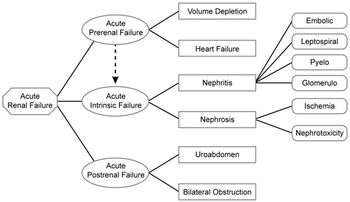
Acute renal failure is a clinical syndrome characterized by an abrupt increase of serum creatinine and blood urea nitrogen (BUN) concentrations to above normal (azotemia).

Acute renal failure is a clinical syndrome characterized by an abrupt increase of serum creatinine and blood urea nitrogen (BUN) concentrations to above normal (azotemia).

Due to the poor prognosis and expense associated with clinical cases of obstructive urolithiasis as well as the herd or flock implications of the disease, considerable focus should be placed on prevention.
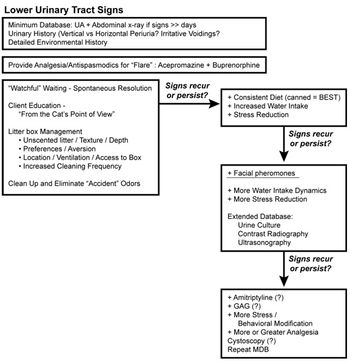
A diagnosis of interstitial cystitis in people and cats requires identification of the presence of characteristic (although non-specific) sub-mucosal petechial hemorrhages--referred to as glomerulations--by cystoscopy, though the diagnostic value of this criterion is under debate.
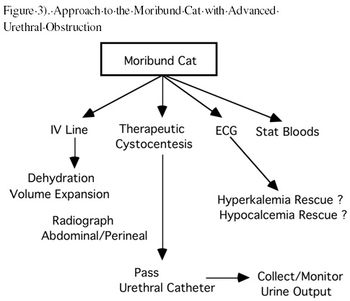
Urethral plugs are the most common cause of obstruction in male cats.

An increased serum calcium is typically first noted when total calcium (tCa) is measured as part of a biochemistry profile.

CRF is clinically characterized in dogs and cats by the development of variably progressive irreversible intrarenal lesions and loss of renal functions.

Ascent of bacteria is the most common origin of bacteria in UTI.

Although many diseases of the urinary and genital systems are similar in many aspects in all mammals, there are features and presentations which are unique to certain species.

Urolithiasis commonly affects dogs and can cause dysuria, stranguria, hematuria, pyuria, and an obstructive uropathy.

Lower urinary tract diseases of cats are a common, and sometimes frustrating, group of clinical problems that practitioners must deal with.

Lakewood, Colo. - A study testing the effects or irradiated food led to the discovery that a cat's central nervous system can repair itself.

An extensive article in a recent issue of Veterinary Clinics of North America: Small Animal Practice presented the answers to 71 of the most common questions veterinarians, staff members, and clients might have about urolithiasis in dogs.
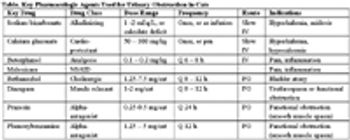
Using proper technique and catheters minimizes post-obstructive inflammation in cats.
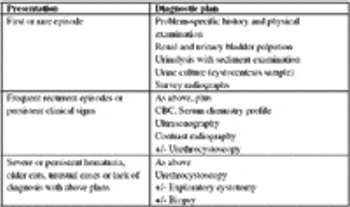
Sterile, inflammatory cystitis in cats may be caused by multiple factors, including viral or other inflammatory triggers, urothelial defects, neurohormonal aberrations, and environmental stresses.
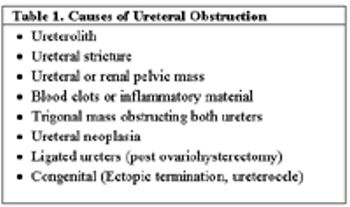
Upper tract uroliths have been relatively rare in cats until the last ten years.

Indications for urinary catheters include urinary obstruction, urinary trauma, voiding disorders, urine diversion during or after surgery, or to monitor urine production.
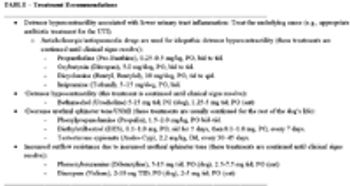
Disorders of micturition encompass problems with urine storage (i.e., leakage or incontinence) and bladder emptying (i.e., urine retention).

FLUTD refers to a spectrum of diseases that result in pollakiuria, hematuria, stranguria, dysuria and/or periuria in the cat.

Chronic kidney disease (CKD) is a common problem that affects an estimated 0.5 to 7% of dogs and 1.6 to 20% of cats.
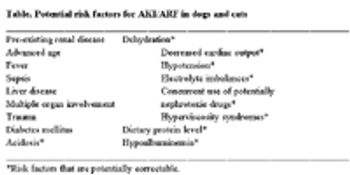
Acute kidney injury often results from ischemic or toxic insults and usually affects the most metabolically active tubular portions of the nephron.

Over the last several years, there has been a shift in the mineral content of uroliths in cats from predominantly magnesium-ammonium phosphate to calcium oxalate.

Azotemia is defined as increased concentrations of urea and creatinine (and other nonproteinaceous nitrogenous substances) in the blood.

Use of non-steroidal anti-inflammatory drugs (NSAIDs) has dramatically improved the quality of life for many dogs with OA.

Renal damage and disease can be caused by acute or chronic insults to the kidney.
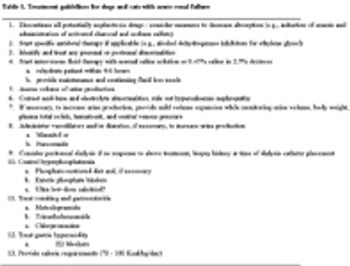
Renal failure results when approximately three fourths of the nephrons of both kidneys cease to function.